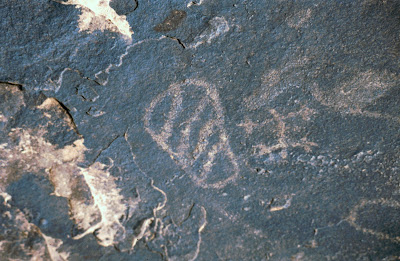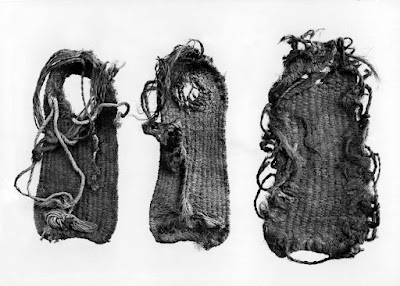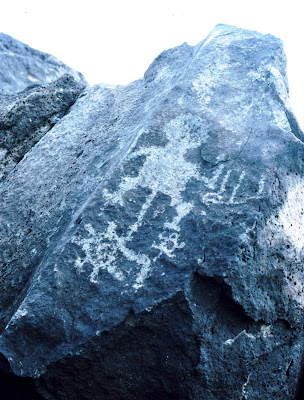There have been a few times when I desperately wanted to leave obscene graffiti for a boss or co-worker, but I never have. Apparently the ancient Roman soldiers who occupied Vindolanda on Hadrian’s Wall in upper England had less restraint. At least one of them carved his attitude towards another in stone.
“Vindolanda (translated as ‘white field’ or ‘white moor’) was a Roman auxiliary fort, situated on the fringes of the Roman Empire near Hadrian’s Wall to guard a major highway called the Stanegate. No less than nine Roman forts were built of timber or stone at Vindolands from around AD 85 to AD 370, creating one of the most complex archaeological sites in Britain and a unique cultural legacy of frontier life.” (HeritageDaily 2022) These were not primitive camps for the troops, but fairly sophisticated villages with eventual stone-built buildings, and a full life for their inhabitants, including apparently a busy social life.
“Nestled in the picturesque Northumberland countryside, Vindolanda with its fort and settlement is a treasure trove of everyday life during the Roman occupation of Britain and beyond. What makes this part of the Hadrian’s Wall World Heritage Site so exceptional, is that some of the nearly 2,000-year-old artefacts uncovered reveal human emotions and feelings. Perhaps the most famous example is the handwritten birthday invitation where one woman very politely requests that her ‘dearest sister’ join her to celebrate her birthday.” (Galloway 2022) At Vindolanda, the soil has a high content of clay which seals off oxygen from buried items, leaving to the survival of a wide range of artifacts made with perishable materials that just do not survive in most other contexts.
“The latest discovery made at Vindolanda gives us a fascinating window into the emotions of someone in the 3rd century, and this time they are not so polite. Dylan Herbert, a retired Biochemist from South Wales made the discovery on 19th May, towards the end of his second week volunteering on the excavations. Dylan commented ‘I’d been removing a lot of rubble all week and to be honest this stone had been getting in my way. I was glad when I was told I could take it out of the trench. It looked from the back like all the others, a very ordinary stone, but when I turned it over, I was startled to see some clear letters. Only after we removed the mud did I realize the full extent of what I’d uncovered, and I was absolutely delighted.’” (Galloway 2022)
“The stone is fairly small, measuring 40 cm wide by 15 cm tall (15 inches by 6 inches). Experts in Roman epigraphy recognized the lettering as a mangled version of Secundinus cacator, which translates into (ahem) ‘Secundinus, the shitter.’ The penus image merely added insult to injury – a clever subversion of the traditional interpretation of a phallus as a positive symbol of fertility. The Vindolanda site now has 13 phallic carvings, more than have been discovered at any other dig site along Hadrian’s wall.” (Ouellette 2022)
“Dr. Andrew Birley, Director of Excavations and CEO of the Vindoland Trust commented: ‘The recovery of an inscription, a direct message from the past, is always a great event on a Roman excavation, but this one really raised our eyebrows when we deciphered the message on the stone. It’s author clearly had a big problem with Secundinus and was confident enough to announce their thoughts publicly on a stone. I have no doubt that Secundinus would have been less than amused to see this when he was wandering around the site over 1,700 years ago.’” (Galloway 2022) Having always heard that Roman discipline was quite strict, and often brutal, I have to wonder if this message points to resentment from someone whom Secundinus had disciplined, or was perhaps going to lead to a session of such discipline for handing such an insult to Secundinus.
NOTE: Images in this posting were retrieved from the internet with a search for public domain photographs. If any of these images are not intended to be public domain, I apologize, and will happily provide the picture credits if the owner will contact me with them. For further information on these reports you should read the original reports at the sites listed below.
REFERENCES:
Galloway, Sonya, 2022, Ancient Graffiti Uncovered, 26 May 2022, https://www.vindolanda.com/news/ancient-graffiti, accessed on 7 July 2022.
HeritageDaily, 2022, Ancient graffiti insulting “Secundinus, the shitter” discovered at Roman Vindolanda, https://www.heritagedaily.com/2022/06/ancient-graffiti-insulting-secundinus-the-shitter-discovered-at-roman-vindolanda/143777, accessed on 13 July 2022.
Ouellette, Jennifer, 2022, Ancient Roman soldier carved a phallus with a personal insult in this stone, 15 June 2022, https://arstechnica.com/science, accessed on 11 July 2022.





.jpg)












%20in%20present-day%20New%20Mexico.%20Stephen%20E.%20Nash.jpg)














